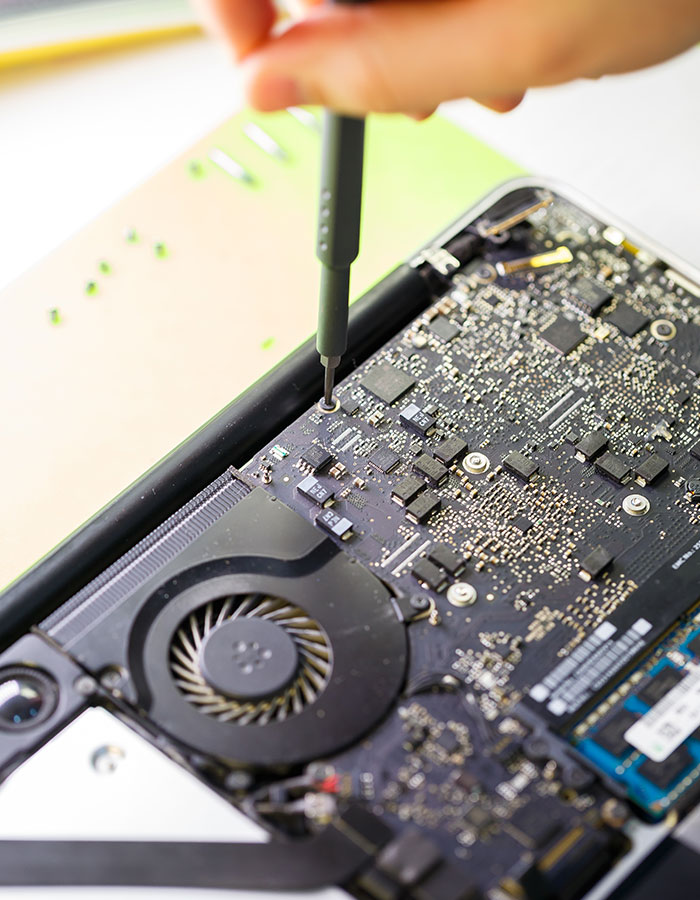FAQs : Laptop Systems
Slow performance can be due to insufficient RAM, a full hard drive, outdated software, or malware. Consider upgrading the RAM, clearing disk space, updating your software, and running a virus scan.
Hardware issues, excessive heat, software conflicts, or outdated drivers can all be the cause of frequent freezes or crashes. Check if your laptop is overheating, update your software and drivers, and scan for malware.
If your laptop won’t power on, check the power cable connection, ensure the battery is charged, and try a different power outlet. If these don’t work, there might be an issue with the battery, power adapter, or internal hardware.
Overheating can result from blocked vents, dust accumulation, or inadequate cooling. Clean the vents and fans, use the laptop on a hard surface, and consider using a cooling pad to improve airflow.
A loud fan can indicate high CPU usage or overheating. Ensure the laptop is clean and vents are not blocked. Check for background processes that are consuming resources and close unnecessary applications.
You can upgrade performance by increasing RAM, replacing the hard drive with an SSD, or upgrading the laptop’s CPU if possible. Additionally, ensure the operating system and drivers are up to date.
Use a reputable antivirus or anti-malware program to perform a full scan and remove any threats. Keep your security software updated and avoid downloading files from untrusted sources.
Connection issues may be due to incorrect network settings, disabled Wi-Fi, or router problems. Check the Wi-Fi settings, ensure the Wi-Fi adapter is enabled, and restart the router if needed.
Back up your data first. Use the recovery media or installation USB to reinstall the OS. Boot from the media and follow the on-screen instructions to complete the installation.
Hardware problems, faulty graphics drivers, or loose connections can all cause screen flickering. Check the display connections, update graphics drivers, and test with an external monitor to isolate the problem.
Upgrade your storage by replacing the existing hard drive with a larger SSD or by adding an external hard drive. Some laptops allow for additional internal storage upgrades as well.
No sound can be due to muted settings, faulty audio drivers, or hardware issues. Check the volume settings, ensure the audio driver is up to date, and check if the speakers are functioning correctly.
To maintain optimal performance, clean your laptop every 3-6 months. Focus on the keyboard, screen, and vents to prevent dust buildup and overheating.
Issues with USB recognition can be due to faulty ports, drivers, or the external device itself. Try different ports, restart the laptop, and update USB drivers.
A blue screen of death (BSOD) often indicates hardware or driver issues. Note the error code, update drivers, check for hardware problems, and perform a diagnostic test if necessary.
These FAQs cover common laptop issues and provide basic troubleshooting steps to help resolve them. For persistent problems, professional repair services may be required.
